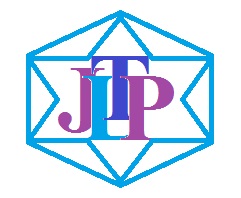APPLICATION OF APP INVENTOR WEBSITE IN ANDROID-BASED PHYSICS LEARNING
DOI:
https://doi.org/10.24114/jltp.v1i2.14913Keywords:
App inventor, Medium of Learning, AndroidAbstract
This study aims to produce physics learning media for class XI high school on the subject matter of optical devices based on android using the MIT app inventor. This research is a Research and Development study using the 4D (Define, Design, Develop and Disseminate) method which starts with the creation of a .apk format-based installer program on the MIT App Inventor website. This program can be used easily by beginners. The user does not need to write or remember instructions because the user only chooses and organizes the choices available on the website so that the user easily develops the application by finding the appropriate blocks. Validity Testing on featured and content in the program is done by experts. Products are revised according to the team's recommendations until the product is feasible to be tested on students. The feasibility and response of the use of the program are done by the teacher, then tested on 10 students in small group trials and 30 students in large group trials. The research results obtained from validation that the program has been declared valid and can be used as a medium for learning physics. Based on the validation test obtained a percentage of features by 97,7% and the percentage of content by 94,95%. The feasibility of an Android-based learning program using the inventor app on material optical equipment by physics subject teachers based on teacher responses of 3.725 and learners of 3.765 in the feasible category. Based on the trial data, the product has been declared suitable for use by teachers and students as a medium of learning in schools and as a medium of independent learning.References
Astuti, I. A. D., Sumarni, R. A., & Saraswati, D. L. (2017). Pengembangan Media Pembelajaran Fisika Mobile Learning berbasis Android. Jurnal Penelitian & Pengembangan Pendidikan Fisika. https://doi.org/10.21009/1.03108
Baran, E. (2014). A review of research on mobile learning in teacher education. Educational Technology and Society.
Chen, P., & Huang, R. (2017). Design Thinking in App Inventor Game Design and Development: A Case Study. Proceedings - IEEE 17th International Conference on Advanced Learning Technologies, ICALT 2017. https://doi.org/10.1109/ICALT.2017.161
Efendi, Y. (2018). Rancangan Aplikasi Game Edukasi Berbasis Mobile Menggunakan App Inventor. Rancangan Aplikasi Game Edukasi Berbasis Mobile Menggunakan App Inventor.
Keller, J., & Suzuki, K. (2004). Learner motivation and E-learning design: A multinationally validated process. Journal of Educational Media. https://doi.org/10.1080/1358165042000283084
Lubans, D. R., Smith, J. J., Skinner, G., & Morgan, P. J. (2014). Development and implementation of a smartphone application to promote physical activity and reduce screen-time in adolescent boys. Frontiers in Public Health. https://doi.org/10.3389/fpubh.2014.00042
Ma, L., Gu, L., & Wang, J. (2014). Research and development of mobile application for android platform. International Journal of Multimedia and Ubiquitous Engineering. https://doi.org/10.14257/ijmue.2014.9.4.20
Marti, N. W. (2009). PENGEMBANGAN MEDIA PEMBELAJARAN GAYA DAN TEKANAN UNTUK SISWA SEKOLAH MENENGAH PERTAMA KELAS VII. Jurnal Pendidikan Teknologi Dan Kejuruan. https://doi.org/10.23887/jptk.v6i2.168
Mohammad Yazdi. (2012). E-learning sebagai Media Pembelajaran Interaktif Berbasis Teknologi Informasi. Jurnal Ilmua Foristek.
Moreno, R., & Mayer, R. E. (2002). Learning science in virtual reality multimedia environments: Role of methods and media. Journal of Educational Psychology. https://doi.org/10.1037/0022-0663.94.3.598
Nikensasi, P., & Kuswardayan, I. (2012). Rancang Bangun Permainan Edukasi Matematika dan Fisika Dengan Memanfaatkan Accelerometer dan Physics Engine Box2d pada Android. Jurnal Teknik ITS.
Perdikuri, K. (2014). Students™ experiences from the use of MIT app inventor in classroom. ACM International Conference Proceeding Series. https://doi.org/10.1145/2645791.2645835
Pusvyta Sari. (2015). MEMOTIVASI BELAJAR DENGAN MENGGUNAKAN E-LEARNING. Ummul Quro.
Rau, P. L. P., Gao, Q., & Wu, L. M. (2008). Using mobile communication technology in high school education: Motivation, pressure, and learning performance. Computers and Education. https://doi.org/10.1016/j.compedu.2006.03.008
Spall, K., Stanisstreet, M., Dickson, D., & Boyes, E. (2004). Development of school students™ constructions of biology and physics. International Journal of Science Education. https://doi.org/10.1080/0950069032000097442
Published
Issue
Section
License
Copyright (c) 2020 Journal of Learning and Technology in Physics

This work is licensed under a Creative Commons Attribution 4.0 International License.



